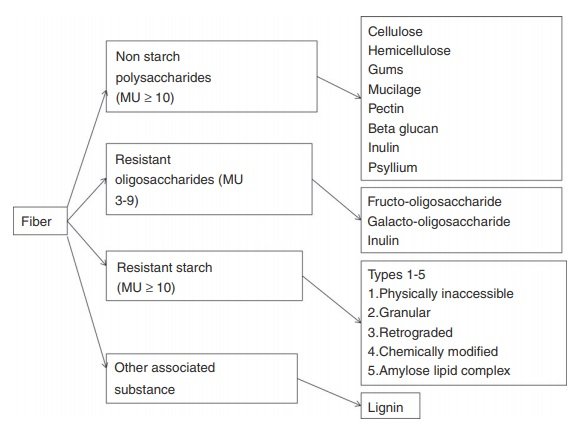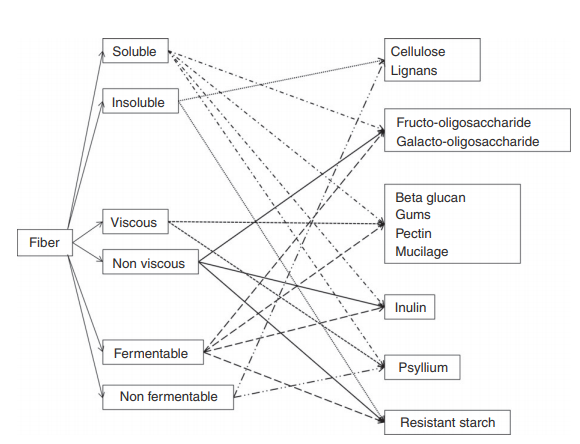
A recent review paper published in Alimentary Pharmacology and Therapeutics titled 'Dietary fibre in the era of microbiome science' discussed in detail a modern perspective on fibre and how best to approach dietary changes. Read our summary here.
Dietary fibres are key players in keeping our GI tracts happy and healthy. They're involved in processes throughout all phases of digestion, from helping us feel fuller for longer, nourishing our gut bugs and keeping us regular.
More and more evidence, including a massive analysis published recently by LANCET, supports the adequate consumption of fibres (between 25 to 29 grams per day) with health and disease prevention (Reynolds 2019). The message is loud and clear: eating fibre every day is good for both our gut and overall health.
A key question that pops up regularly is: can I just dose up on a fibre supplement to get the job done as opposed to eating fibrous foods?
Unfortunately, a single (or even several) fibre supplements won't have the same health benefits as fibres derived from dietary sources. This is because dietary fibre isn't a super-food or a super-nutrient, but an umbrella term for carbohydrates that our body cannot break down (CODEX 2017).
Many types of non-digestible carbohydrates are actually classified as dietary fibres. Beta-glucans, fructans, inulins, psyllium and wheat bran, just to name a few. These compounds each have distinct physical and chemical properties, subsequently acting along the GI tract and affecting our health in different ways (Eswaran 2013; McRorie 2017).
For example, beta-glucans are highly viscous and can make us feel fuller for longer as well as interfering with cholesterol production, but isn't likely to improve bowel habit (Stephen 2017). Fructans and inulin feed our gut bugs, producing gases and other metabolites, but offer little other functionality along our GI tract (McRorie 2016).
A recently published in Alimentary Pharmacology and Therapeutics, reinforces these distinctions between fibres, showcasing the differences between different fibres and their properties. Taken directly from the review, these figures provide an example of just how different types of fibres exist and how distinct each of their properties are (O’Grady 2019).

Figure 1. Example of fibre subtypes, classified by degrees of polymerisation. Source: O'Grady 2019

Figure 2. Overlapping properties of fibre by solubility, viscosity and fermentability. Source: O'Grady 2019
References
Reynolds, A., Mann, J., Cummings, J., Winter, N., Mete, E., & Te Morenga, L. (2019). Carbohydrate quality and human health: a series of systematic reviews and meta-analyses. The Lancet, 393(10170), 434-445.
CODEX Alimentarius (CODEX). (2017). Guidelines on Nutrition Labeling CAC/GL 2-1985. Available from: http://www.fao.org/ fao-who-codexalimentarius/sh-proxy/es/?lnk=1&url=https%253A% 252F%252Fworkspace.fao.org%252Fsites%252Fcodex%252F Standards%252FCAC%2BGL%2B2-1985%252FCXG_002e.pdf
Eswaran, S., Muir, J., & Chey, W. D. (2013). Fiber and functional gastrointestinal disorders. The American journal of gastroenterology, 108(5), 718.McRorie Jr, J. W., & McKeown, N. M. (2017). Understanding the physics of functional fibers in the gastrointestinal tract: an evidence-based approach to resolving enduring misconceptions about insoluble and soluble fiber. Journal of the Academy of Nutrition and Dietetics, 117(2), 251-264.
Stephen, A. M., Champ, M. M. J., Cloran, S. J., Fleith, M., Van Lieshout, L., Mejborn, H., & Burley, V. J. (2017). Dietary fibre in Europe: current state of knowledge on definitions, sources, recommendations, intakes and relationships to health. Nutrition research reviews, 30(2), 149-190.
McRorie, J. W., & Chey, W. D. (2016). Fermented fiber supplements are no better than placebo for a laxative effect. Digestive diseases and sciences, 61(11), 3140-3146.
O’Grady, J., O’Connor, E. M., & Shanahan, F. (2019). dietary fibre in the era of microbiome science. Alimentary pharmacology & therapeutics, 49(5), 506-515.